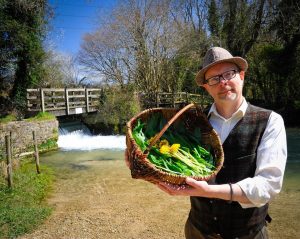Where is the spice? That is a good question, as one could be forgiven for thinking our ancestors in these islands didn’t care much for it before the middle ages. I can’t help thinking that this may be a misconception that has arisen out of the cuisine of the last 100 years though; doubtless somewhere there is a food historian who can put me on the right track?…
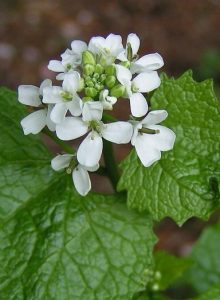
Jack-by-the-Hedge: image by Sannse at the English language Wikipedia [GFDL (//www.gnu.org/copyleft/fdl.html)
Jack by the Hedge / garlic mustard – Alliaria petiolata
I thought I would start with this plant because it is a good contender. Not only is it in the very edible cabbage and mustard family, its leaves are hot and spicy, tasting of mustard as well as garlic – as its other name, ‘garlic mustard’, explains… but what of the seeds I thought? According to Saul et al, in “Phytoliths in Pottery Reveal the Use of Spice in European Prehistoric Cuisine”1, garlic mustard was definitely in use as a spice in the baltic region of Europe over 6000 years ago.
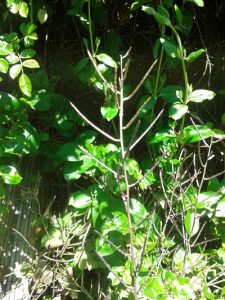
Jack by the hedge – garlic mustard in seed
Some time ago I remember sampling some out in the forest as I was walking along a shady wooded ride and being immediately taken aback by their ‘kick’. I revisited this place where garlic mustard grows all around, so as to recreate the sense of connection with this experience and take my spice journey further on to its next stage.
The first obstacle I came up against was that the seed pods appeared to be all ripening at different stages, meaning that some seed fell to the ground as soon as I touched the plant, but much of it was practically inseparable from the stringy seed cases surrounding it.
I soon resolved to harvest all of the seed pods regardless of maturity and attempt to ripen them in the sun when I got home. I found that I could save a lot of time by holding a large bag open and stripping the whole seed pods en-mass by sliding my hand down the stems. Here is the result…
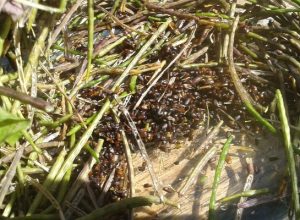
garlic mustard seed separated from the pods by sun drying then rubbing between the palms
Once at home, I placed the seed pods in a large glass dish and let the sun do its work. I brought them in each evening and waited until things began to warm again each day before putting them back outside on a table in the sun. After about 3 days more than three quarters of the seed was fairly ripe and I judged that the remainder had probably hardened enough to strip from the pods without much damage.
I found that the best way to remove the seed was by rubbing the pods between my palms, and to twist any that were stubbornly hanging on to their seed between my fingers until they ruptured and twisted undone. The seeds, being small and heavy, all sank to the bottom of the bowl. I then used a colander to separate the seed pods from the seed – putting the whole lot through it 3 times…
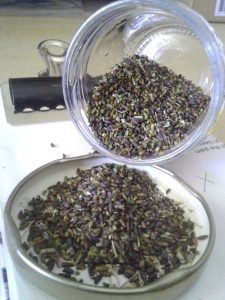
SPICE SCORE: 8 out of 10
I dried the seed a little further to lower the moisture content prior to storage, simply keeping it out in our warm scullery on a stainless steel tray for a couple of days.
The result is surprisingly good. Though the quantity obtained is small, it is very hot, packing a real punch. It is also pleasant in texture when used as a whole seed. There are definitely overtones of horseradish, garlic and pepper and a little will go a very long way but be warned, the heating effect is cumulative!
1 – Saul H, Madella M, Fischer A, Glykou A, Hartz S, Craig OE (2013) Phytoliths in Pottery Reveal the Use of Spice in European Prehistoric Cuisine. PLoS ONE 8(8): e70583. doi:10.1371/journal.pone.0070583

